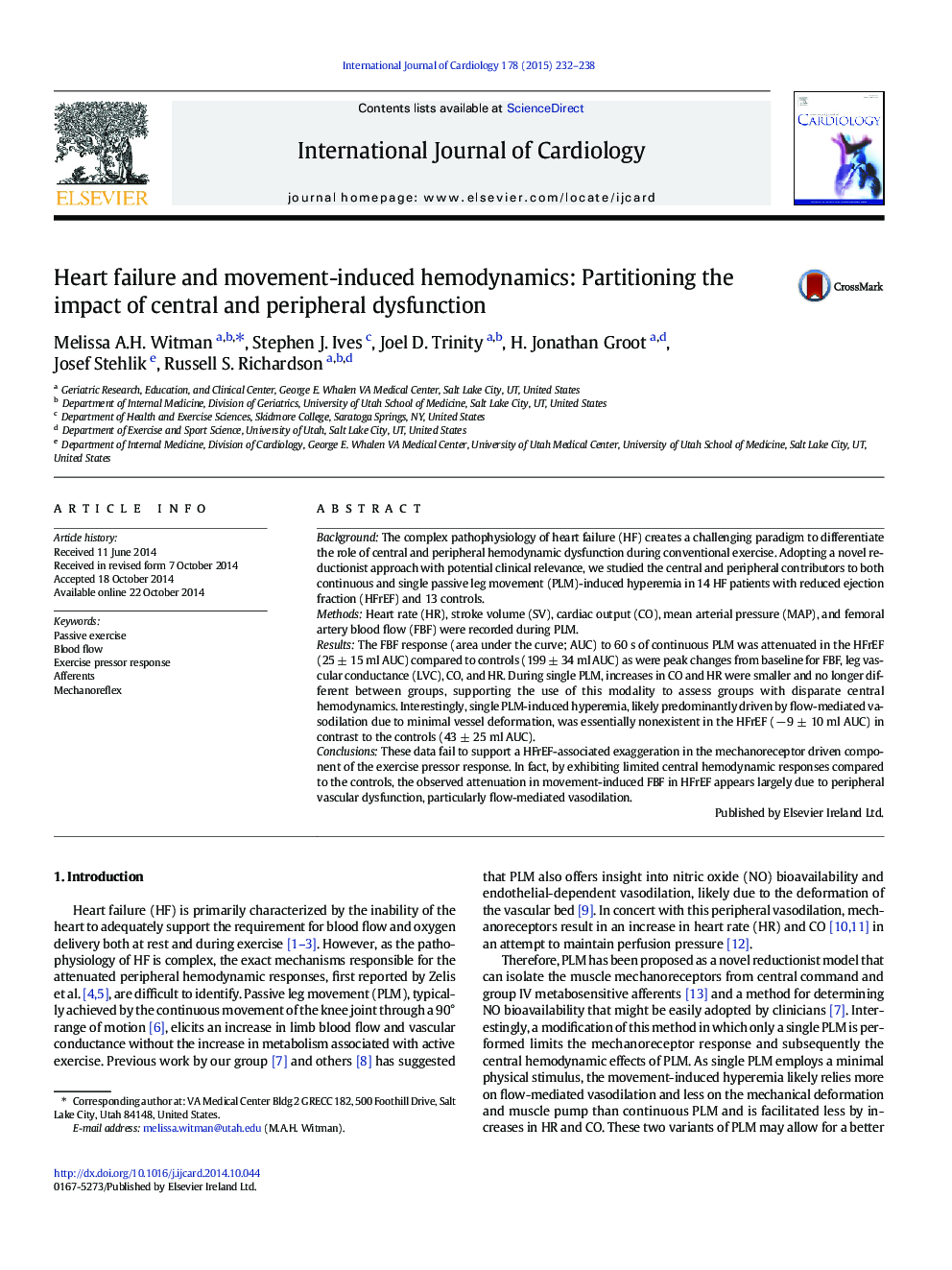| Article ID | Journal | Published Year | Pages | File Type |
|---|---|---|---|---|
| 2929184 | International Journal of Cardiology | 2015 | 7 Pages |
•Use novel reductionist approach to isolate contributors to movement-induced hyperemia•No evidence of exaggerated exercise pressor reflex in HFrEF•Attenuated movement-induced leg blood flow is partially due to vascular dysfunction.•Passive leg movement is novel tool in assessing vascular function in health & disease.•Supports the need to focus on the periphery when targeting exercise intolerance
BackgroundThe complex pathophysiology of heart failure (HF) creates a challenging paradigm to differentiate the role of central and peripheral hemodynamic dysfunction during conventional exercise. Adopting a novel reductionist approach with potential clinical relevance, we studied the central and peripheral contributors to both continuous and single passive leg movement (PLM)-induced hyperemia in 14 HF patients with reduced ejection fraction (HFrEF) and 13 controls.MethodsHeart rate (HR), stroke volume (SV), cardiac output (CO), mean arterial pressure (MAP), and femoral artery blood flow (FBF) were recorded during PLM.ResultsThe FBF response (area under the curve; AUC) to 60 s of continuous PLM was attenuated in the HFrEF (25 ± 15 ml AUC) compared to controls (199 ± 34 ml AUC) as were peak changes from baseline for FBF, leg vascular conductance (LVC), CO, and HR. During single PLM, increases in CO and HR were smaller and no longer different between groups, supporting the use of this modality to assess groups with disparate central hemodynamics. Interestingly, single PLM-induced hyperemia, likely predominantly driven by flow-mediated vasodilation due to minimal vessel deformation, was essentially nonexistent in the HFrEF (− 9 ± 10 ml AUC) in contrast to the controls (43 ± 25 ml AUC).ConclusionsThese data fail to support a HFrEF-associated exaggeration in the mechanoreceptor driven component of the exercise pressor response. In fact, by exhibiting limited central hemodynamic responses compared to the controls, the observed attenuation in movement-induced FBF in HFrEF appears largely due to peripheral vascular dysfunction, particularly flow-mediated vasodilation.
